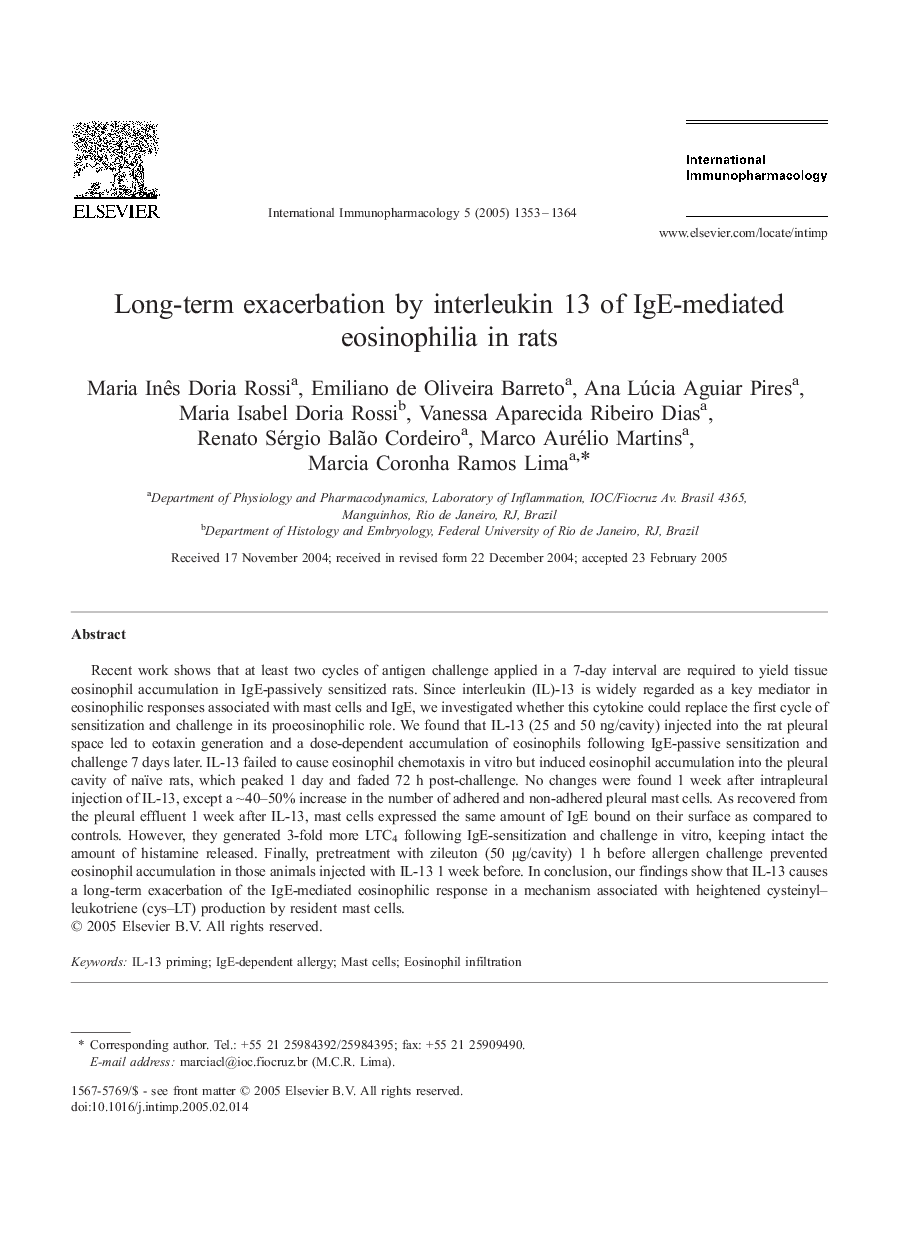| Article ID | Journal | Published Year | Pages | File Type |
|---|---|---|---|---|
| 9008012 | International Immunopharmacology | 2005 | 12 Pages |
Abstract
Recent work shows that at least two cycles of antigen challenge applied in a 7-day interval are required to yield tissue eosinophil accumulation in IgE-passively sensitized rats. Since interleukin (IL)-13 is widely regarded as a key mediator in eosinophilic responses associated with mast cells and IgE, we investigated whether this cytokine could replace the first cycle of sensitization and challenge in its proeosinophilic role. We found that IL-13 (25 and 50 ng/cavity) injected into the rat pleural space led to eotaxin generation and a dose-dependent accumulation of eosinophils following IgE-passive sensitization and challenge 7 days later. IL-13 failed to cause eosinophil chemotaxis in vitro but induced eosinophil accumulation into the pleural cavity of naïve rats, which peaked 1 day and faded 72 h post-challenge. No changes were found 1 week after intrapleural injection of IL-13, except a â¼Â 40-50% increase in the number of adhered and non-adhered pleural mast cells. As recovered from the pleural effluent 1 week after IL-13, mast cells expressed the same amount of IgE bound on their surface as compared to controls. However, they generated 3-fold more LTC4 following IgE-sensitization and challenge in vitro, keeping intact the amount of histamine released. Finally, pretreatment with zileuton (50 μg/cavity) 1 h before allergen challenge prevented eosinophil accumulation in those animals injected with IL-13 1 week before. In conclusion, our findings show that IL-13 causes a long-term exacerbation of the IgE-mediated eosinophilic response in a mechanism associated with heightened cysteinyl-leukotriene (cys-LT) production by resident mast cells.
Keywords
Related Topics
Life Sciences
Immunology and Microbiology
Immunology
Authors
Maria Inês Doria Rossi, Emiliano de Oliveira Barreto, Ana Lúcia Aguiar Pires, Maria Isabel Doria Rossi, Vanessa Aparecida Ribeiro Dias, Renato Sérgio Balão Cordeiro, Marco Aurélio Martins, Marcia Coronha Ramos Lima,
